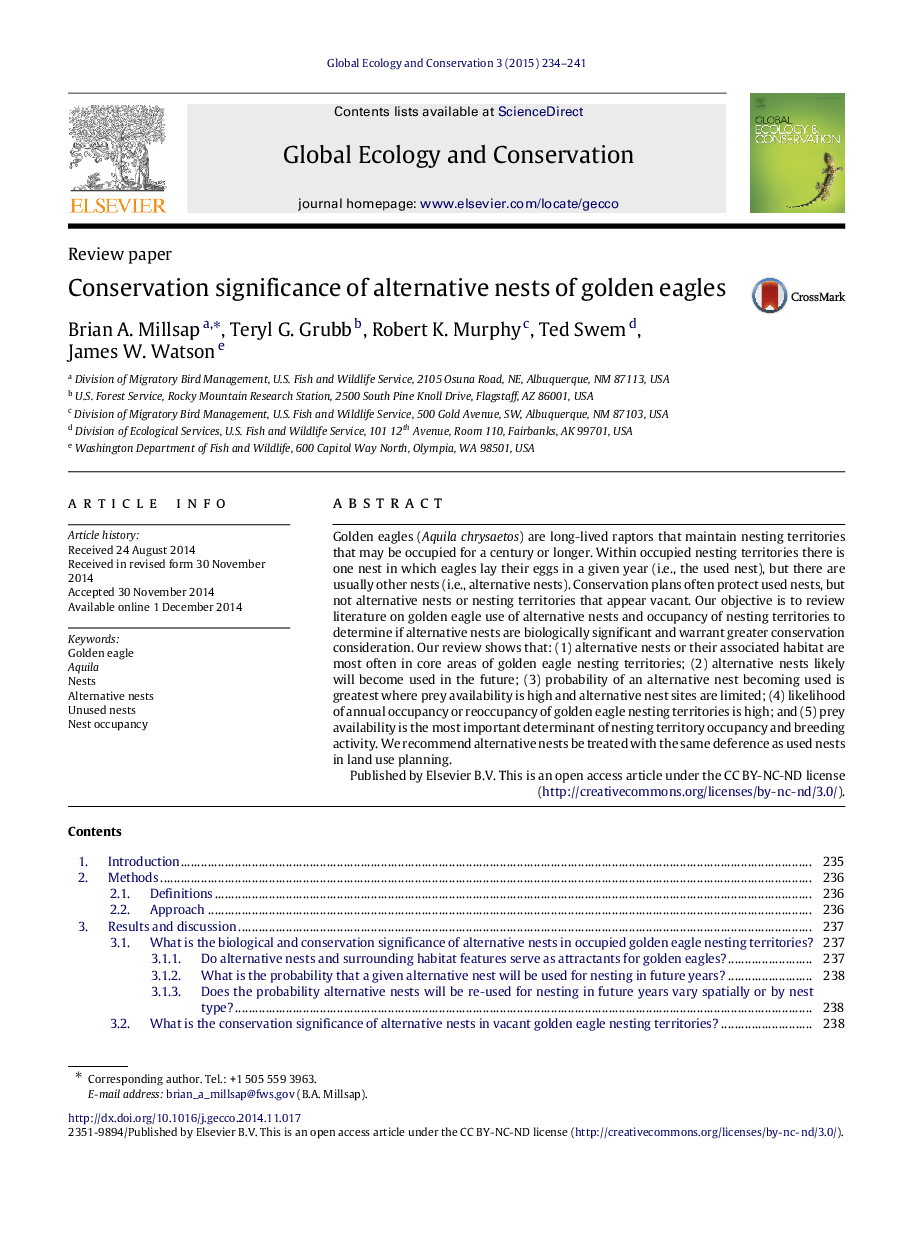| Article ID | Journal | Published Year | Pages | File Type |
|---|---|---|---|---|
| 4379616 | Global Ecology and Conservation | 2015 | 8 Pages |
Golden eagles (Aquila chrysaetos) are long-lived raptors that maintain nesting territories that may be occupied for a century or longer. Within occupied nesting territories there is one nest in which eagles lay their eggs in a given year (i.e., the used nest), but there are usually other nests (i.e., alternative nests). Conservation plans often protect used nests, but not alternative nests or nesting territories that appear vacant. Our objective is to review literature on golden eagle use of alternative nests and occupancy of nesting territories to determine if alternative nests are biologically significant and warrant greater conservation consideration. Our review shows that: (1) alternative nests or their associated habitat are most often in core areas of golden eagle nesting territories; (2) alternative nests likely will become used in the future; (3) probability of an alternative nest becoming used is greatest where prey availability is high and alternative nest sites are limited; (4) likelihood of annual occupancy or reoccupancy of golden eagle nesting territories is high; and (5) prey availability is the most important determinant of nesting territory occupancy and breeding activity. We recommend alternative nests be treated with the same deference as used nests in land use planning.
